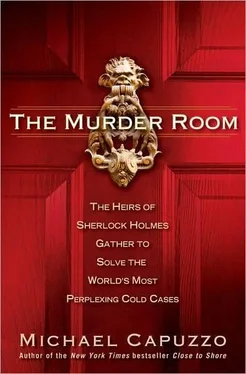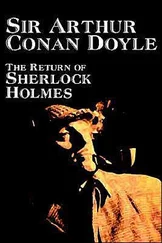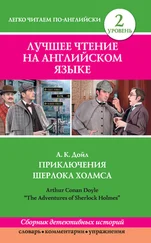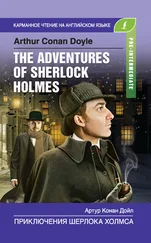Or maybe it was just a suspicious nurse peering out her back window. Vorhauer seemed as real as death, as unreal as a ghost.
Bender snapped back to the world around him and picked up his pastels. He walked to his easel and said, “Let’s get this down in detail so the task force knows exactly what he looks like. I want to nail the guy.”
Schneider nodded, and stood behind Bender at the sketch board. The artist’s hand moved rapidly across the white sketch paper, creating a narrow street and a car almost as rapidly as Schneider described the scene. “We were doing surveillance of the wife, waiting for her to come out of the house,” the deputy said. “I saw him on the street getting into a parked car on the right side of the street-”
“What’d he look like?” Bender’s pulse raced. He felt they were finally zeroing in on their quarry.
“He looked nasty,” Schneider said.
Bender nodded impatiently. “I could just see the side of the driver’s face, his ear, as I drove by them,” the marshal continued. “I had an angle on Vorhauer sitting in the passenger seat. Hard, lean, pockmarked face, reddish-brown hair. He was wearing a baseball cap.”
“What color?”
“Blue.”
The sketch quickly filled in to match Schneider’s description.
Bender turned and looked at Schneider. “Did he know you were around?”
“No way, partner.” The deputy’s eyes narrowed, as if he had been insulted. “We’ve done this once or twice.”
Bender lowered his heavy brow until his light blue eyes reduced to slivers of ice. His voice was measured and cool, as if some internal fan had slowed everything down. Bender knew Vorhauer was reputed to have the highest IQ of anybody in the history of the Pennsylvania penal system.
“He’s extremely street smart. A guy like Vorhauer can sense when he’s being watched-that’s good enough for him.”
Schneider shrugged. “Not a chance.”
“What did you do? ” asked Bender, his face flushing with adrenaline.
Schneider grimaced. “Nothing.”
“What do you mean ‘nothing’?” The artist’s head turned the color of a ripening plum.
“We couldn’t do anything,” Schneider said, eyes downcast. “He’d think nothing of shooting at me. We’ve got to pick our time and place.”
Bender’s arm sagged over the easel. Schneider and the others always described Vorhauer in terms of awe. “This is a very formidable individual,” Schneider kept saying. “Very formidable.” Schneider couldn’t get over the fact that after the genius hit man and finish carpenter engineered his prison escape, he attended college to study chemistry and constructed an autonomous meth lab that allowed him to manufacture the drug without being in the lab to risk arrest or potential explosions. Even the cops were afraid of Vorhauer, who was extremely violent and had shot his way out of stakeouts in the past.
“Cheer up. We can’t lose with the Visual Detective on our side,” said Schneider, referring to the nickname he had hung on Bender.
Bender grinned good-naturedly, but his eyes were again far away. He was hearing the voice he trusted most, “something from inside of myself.” Others called it intuition, but to Bender the voice spoke with utter certainty, and gave him evidence that couldn’t be stored in a police locker, or confined to court documents. The voice supplied now three fresh insights he decided were absolute fact, and worth a trip, late that night after Schneider left, back to the drawing board. First, Vorhauer knew he had been seen up close by a U.S. Marshal. Second, as a defensive maneuver the master of disguise would dramatically change his looks again.
Third, he would become a blond.
“A blond?” Tom Rappone, the head of the U.S. Marshals Service in Philadelphia, looked quizzically at Bender when he handed him the final sketch of Vorhauer that afternoon. It was a black-and-white sketch; there was no time to blend pastel colors, Bender explained. Still, the charcoal shading indicated light blond hair.
“This is what Vorhauer looks like,” Bender said defensively. “If you catch him within two weeks, he’s going to be bleached blond.”
“Blond.” Rappone flashed a humorless smile beneath dark, probing eyes. The deputies were constantly amused by Bender’s off-the-wall ideas and visions, but this was a topper. A mob hit man disguised as the Breck girl.
“He’s Aryan and proud of his Germanic heritage,” Bender said. “The skin coloring is right,” he insisted. “He’s also an artist, very creative.”
Rappone waited as if there must be more. Bender’s face reddened. He didn’t get timid when his psychic visions were questioned; he got mad, and sometimes he got even.
“I learned from Fleisher that when he was with the FBI in Boston they tailed Vorhauer to a lot of gay and transsexual bars,” he said. “Vorhauer wasn’t gay, he was recruiting enforcers. But he looks way too straight. Going blond would allow him to pass in tranny bars. Tom, I’m telling you, he’s going to bleach his hair.”
Rappone shrugged and made copies of the blond hit man for his agents. When Schneider saw the sketch, he sported a wide grin. “We believe in you, Frank, but an assistant DA says this is a joke, and a lot of the guys think you’re nuts.”
Bender smiled with his sheepish look that swayed moral women of all ages.
Bender was still struggling to perfect the Vorhauer bust a week later when the phone rang in the vast warehouse studio. It was Rappone, with the news that the task force’s long surveillance of Barbara Vorhauer had borne fruit. She had led the marshals right to her husband.
“You’re kidding me! What happened? ” The artist’s voice, childlike in its enthusiasms, rang across the line.
A night-shift nurse at Osteopathic Hospital, Barbara had gotten off work early in the morning as usual. But instead of taking her routine route home, she’d raced along a twisting, helter-skelter path designed to shake surveillance. Trained by Hans, Barbara had proven remarkably adept at avoiding the marshals for months.
But this time they kept pace with hairpin turns and U-turns, up blind alleys, and into the parking lot of the Penrose Diner. Barbara got out of her car and entered the diner. When she came out, she left her car in the parking lot and walked across the street to the Quality Inn, a twelve-story cylindrical edifice. Hans Vorhauer had picked the round hotel with views in all directions for a tryst with his wife.
Rappone posted a nondescript surveillance van in the hotel parking lot intending to wait out Vorhauer. The day wore on, and inside the van, four heavily armed U.S. Marshals kept a relentless eye on the hotel entrance, unable to leave the van even to use the bathroom. Any unusual movement would spook Vorhauer into fleeing. The surveillance continued all night long. By morning, Rappone had called for backup.
At 10 A.M., Vorhauer and his wife walked out of the hotel and were immediately surrounded by U.S. Marshals. The hit man raised his hands in surrender. He was wearing a light jacket, a hat, and sunglasses, and when he removed the hat his hairstyle was dramatically different: It was cut short and bleached blond.
“Good work, Visual Detective. I don’t know how you do it,” said a still-stunned Schneider, who had dropped by the studio to congratulate his artist partner. “A lot of people owe you an apology.”
“Good work yourself,” Bender said. “You’re the best detective I’ve ever worked with.”
“Want to go get a beer?”
“Nah, I’ve got to paint this head.”
Schneider looked at the bust of a dead man with a familiar face. “The Man in the Cornfield,” Bender called the unidentified white male in his twenties whose corpse had been found by a farmer plowing his fields in Lancaster County, Pennsylvania. Over the weeks they had worked together on the Vorhauer case, Schneider had watched him transform the skull of the Man in the Cornfield into a clay mold and finally a plaster cast. The white plaster bust had a heroic profile, a handsome long-haired young man with a strong jaw and a noble nose. The Man in the Cornfield looked like Theseus about to face the Minotaur. “Now that you’ve found Vorhauer”-Bender nodded toward the head-“maybe you can find out who this guy is.”
Читать дальше












